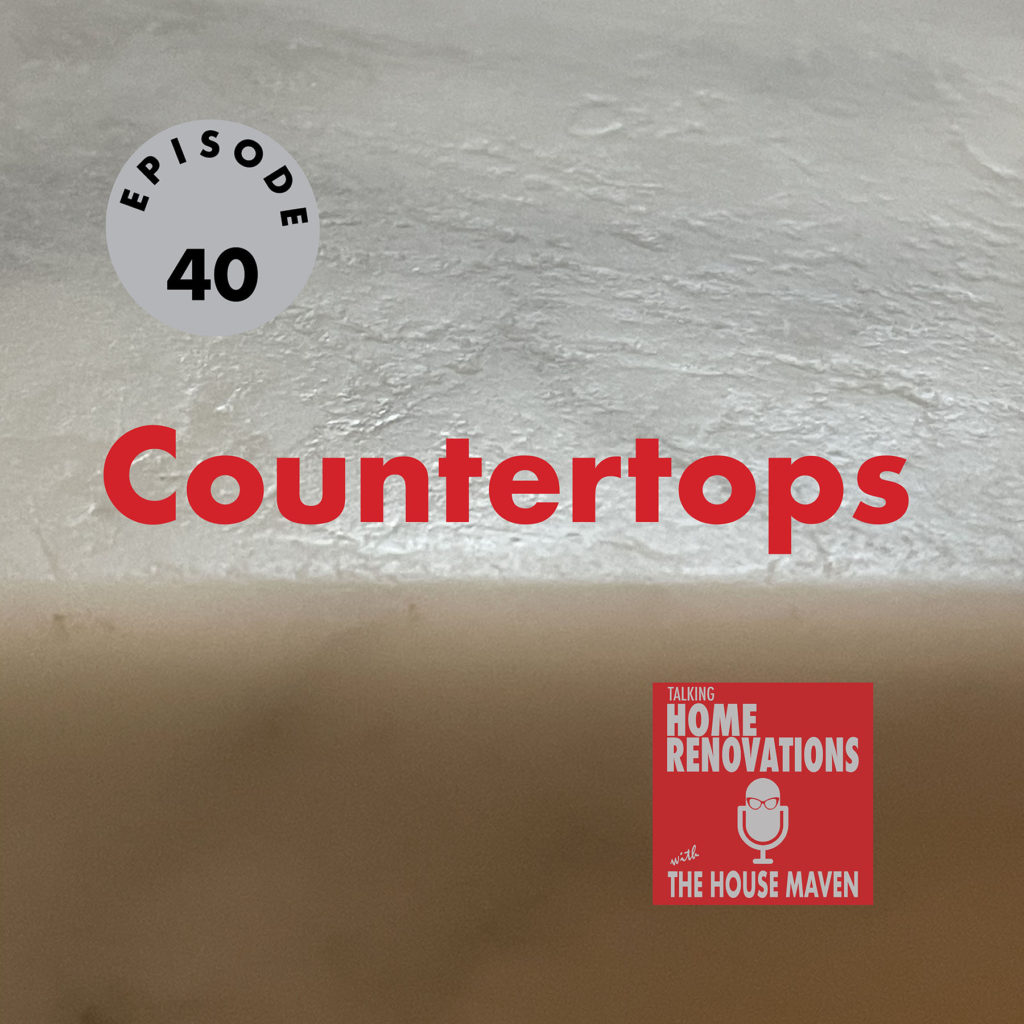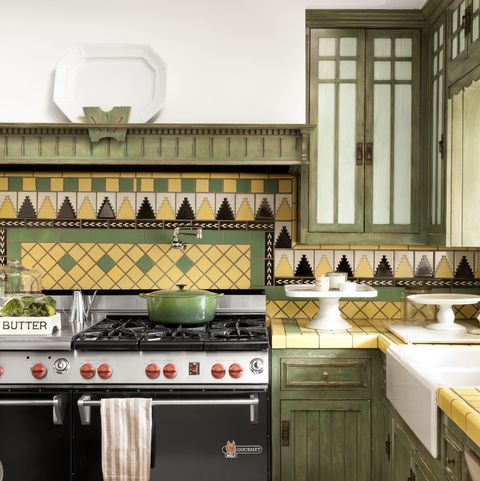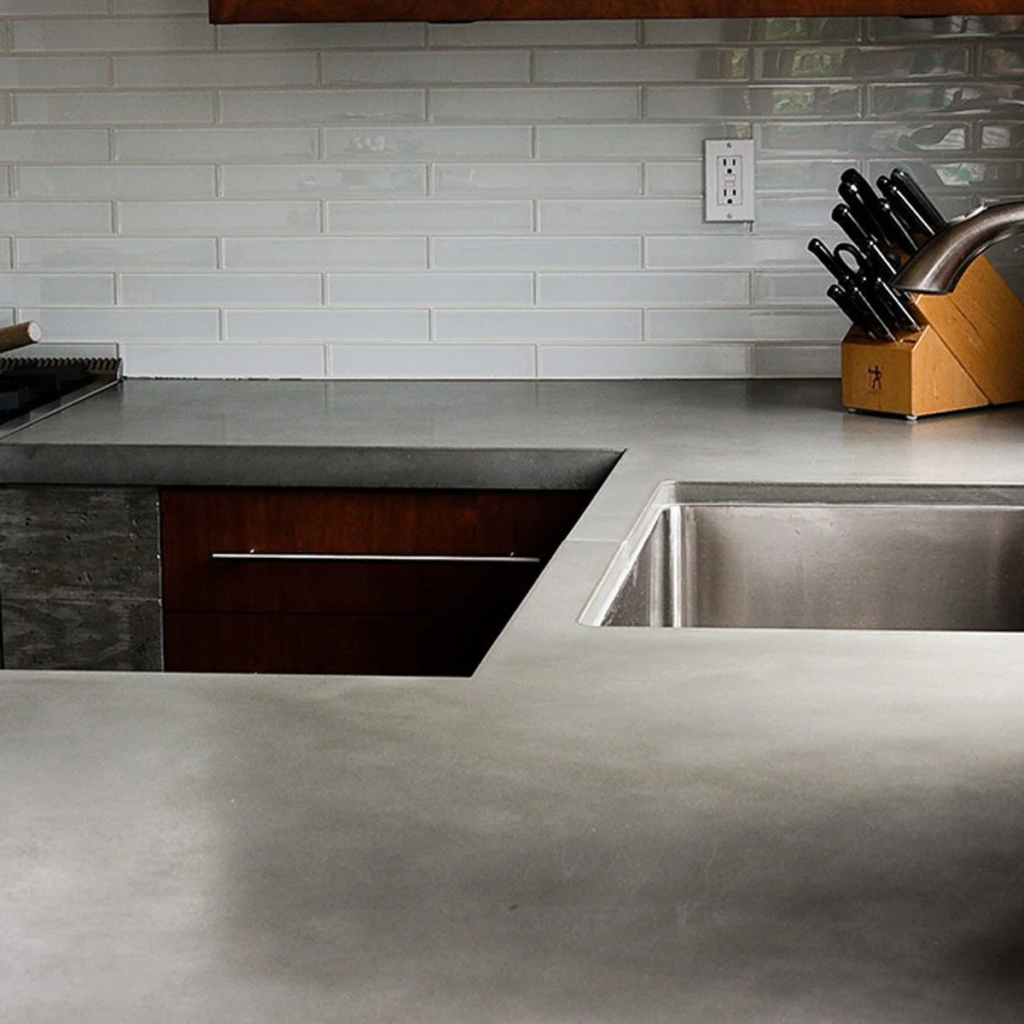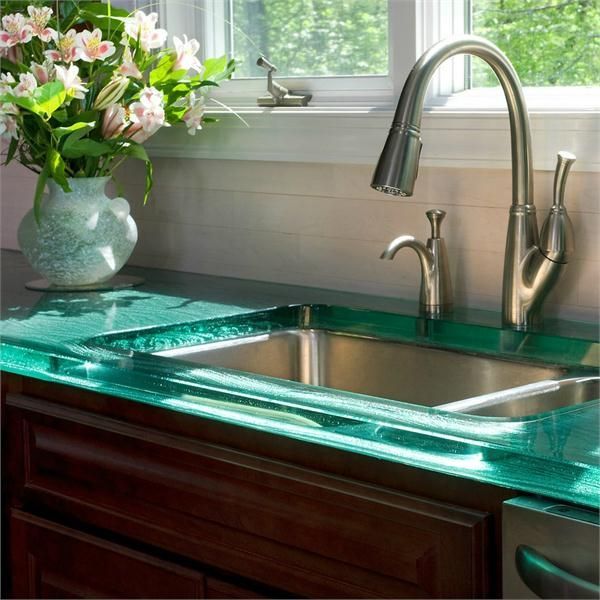
In this week’s episode I talk to countertop expert and stone enthusiast Lili Morris. She’s been in the cabinet and countertop industry for about 4 years Tennessee (We met on Instagram, where she is @house_on_everett_hill). We talked about various kinds of stone countertops, both naturally formed and man-made. We did get a bit into laminate and solid surface countertops, but there are many more materials available. The episode covered stone pretty thoroughly, but I know there are alternatives we did not discuss. This is not a comprehensive list, just a sampling of some alternatives that are intriguing and/or possible to install yourself. While it may be true, as Lili asserts, that nothing quite beats a beautiful slab of stone, depending on your budget, maintenance and desired atmosphere you may be interested in some of these alternative materials.

Tile countertops
There’s really something to be said for their sheer variety of looks achievable with tile countertops. Not only do they have many options for color and pattern (and shape), but also material- beyond standard ceramic tiles there are tiles made out of materials like glass and stone. Though this variety makes it difficult to pin down the conversation in terms of style, what all tiling does have in common is its form, which brings with it a number of particular strengths and weaknesses. Tiles are relatively simple to install, meaning that a tile countertop is far more feasible to DIY than other materials. Ceramic and glass tiles—being relatively thin—can be fragile, but if a tile does chip or break it’s easy enough to replace.
The biggest downside of this material is dealing with the grout (the material seen between the tiles used to adhere them to the surface). Grout is very porous and must be sealed regularly, and thoroughly cleaned even more often than that. Cleaning grout is quite meticulous, in fact. You’ll need to use a small brush to get between the tiles, and because the grout lines are indented spills will naturally collect there. This makes tile countertops not a great choice if you’re looking for something lower maintenance. It’s also important to note that not all tiles are suitable for use in countertops, particularly ceramic tiles with a thick glaze, so make sure when you’re picking out tiles that they can be used for countertops.
Overall it’s a beautiful medium which can bring a lot of creativity and color to your kitchen. The cost will vary depending on the tiles you use and whether you have them professionally installed or DIY, but it’s generally towards the lower end.

Concrete countertops
Concrete countertops are another great choice. You could say their situation is the inverse of tile countertops: not a huge amount of variety in terms of looks (though there still is some, especially when you factor in finishes), but plenty of flexibility in terms of form. Not only in its overall shape, but its features as well: You can have a built in drainboard, a cutting board, perhaps a gutter to contain spills- your imagination is the limit. Some might think of it as a cold material, but I think it can be warm and welcoming if contextualized correctly.
Concrete can be exceptionally long lasting and durable, standing up to heavy use especially if reinforced. They’re difficult to scratch and impervious to heat (although don’t cut a lemon on it, speaking from experience). Concrete can be a DIY project but you’ll have to be prepared to put a lot of work into it and hit a few bumps along the way if you’re inexperienced.
It’s also important to note that it can take a long time to design, cast and set, so if you’re rushing to get your kitchen finished it might not be the best choice. Concrete is also a porous material, and can be vulnerable to stains and bacteria if not sealed semi-regularly. The cost of a concrete countertop is somewhere in the range of granite or marble.

Wood/butcher block countertops
A third option is wood or butcher block countertops. People use these terms more or less interchangeably, and there isn’t a huge difference besides the fact that true butcher block is made from harder varieties of wood. Wood is a very beautiful, warm material, and not only in terms of appearance- wood is physically warmer to the touch than many other materials.
There are many different kinds of wood available, which makes for a lot of customization- even more so when you factor in grain direction and what stain you use. It might seem like a counterintuitive material to use for a countertop, but it can be quite long lasting if cared for properly. As you might imagine, it’s naturally a very porous material, which means that it requires pretty regular sealing, and if not properly maintained it can become vulnerable to water damage.
Even harder varieties of wood are comparatively soft, making it easily scratched and dented. Because of this, cutting directly on the countertop isn’t really an option unless you’re going for a more weathered look. Wood countertops are actually more heat resistant than you might think, but if you’re careless they can burn: In other words you could not put a hot pot on them- at least not for an extended period of time.
Another feature of wood is that it expands and contracts as the temperature fluctuates, and if you don’t have enough space between the wall and the countertop it can lead to damage. Luckily this is easy enough to account for if you’re mindful of it during the installation process. The price range for wood countertops is quite wide depending on the kind of wood and the grain direction, but on the mid-to-low end they can be pretty affordable.
Stainless steel countertops
If you’re looking for the ultimately functional option, stainless steel countertops would probably be your choice. Though offering little in terms of beauty or variety, they are useful and low maintenance (which is why they are the material of choice for restaurant kitchens- and they do evoke that sort of atmosphere). As the name would imply, stainless steel cannot stain or rust. It’s a nonporous material, and thus impervious to bacteria with no need for any kind of special cleaners or sealants. It is more or less impervious to heat, and easy to install.
Though long lasting in a big picture sense, light scratches build up extremely easily, and visible wear is all but guaranteed over time. Surface level scratches can be buffed out with relative ease, but deeper scratches and dents are not as easy to remove. Steel countertops can also be quite noisy, but that’s probably not a dealbreaker for most people. The main downside is that it’s seen as a cold and sterile material, both physically and aesthetically. It’s worth noting that there are other metals fit for countertops, and some of them are quite beautiful. The cost of a stainless steel countertop is in about the same range as marble.

Glass countertops
Now we come to glass countertops. Honestly, I have never seen a countertop like this even in magazines. Glass can contribute to a very modern look and backlighting it would be stunning. In terms of its physical properties, glass shares many benefits of stainless steel but with a considerable downside. It’s quite heat resistant and completely nonporous like metal, which means no sealing and near total resistance to stains and bacteria. However, unlike steel it can chip, crack and dent easily and oftentimes irreparably.
It’s sturdier than you might think, and if you exercise care it should be able to last for a long time, but its relative fragility should still be a factor when selecting a countertop. Like steel it can scratch easily and noticeably, and it’s also worth noting that it can etch from acids, so you have to be careful with what you clean it with.
My takeaway – if you’re selecting your countertop with function in mind, I would stay away from this option. If you’re not relying on it to take heavy use and instead are looking for something that is unusual and looks amazing, then consider it. Another form of glass which I would consider perhaps more functional for its use in countertops is white glass (glass mixed with silica and fired at high temperatures). While it is quite durable compared to other forms of glass and has a beauty all its own, it is extraordinarily expensive – and glass is already a costly material.